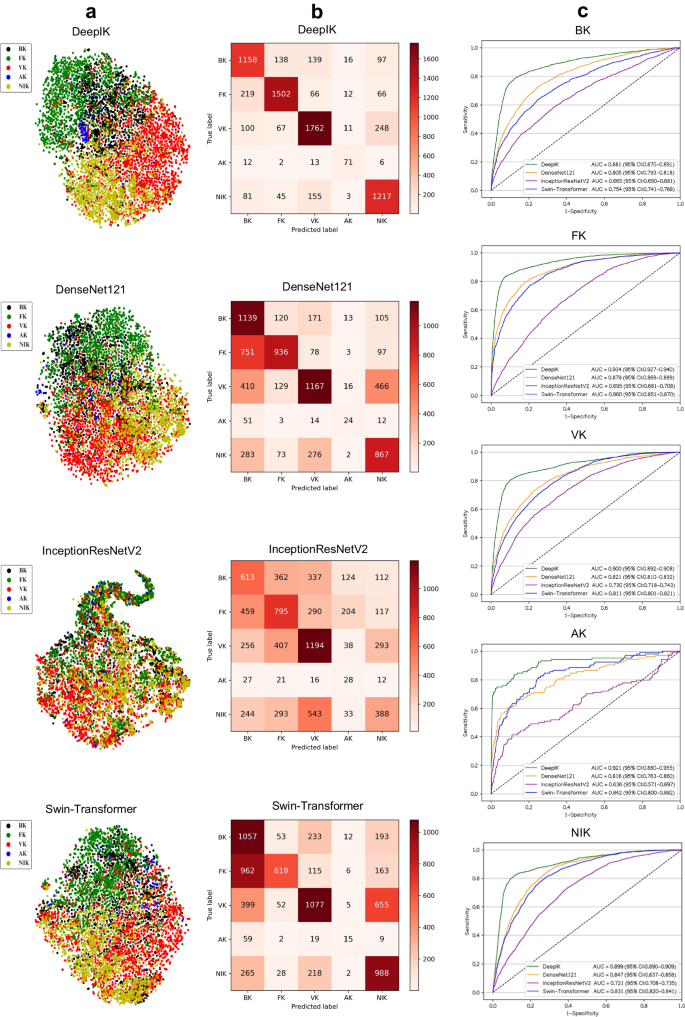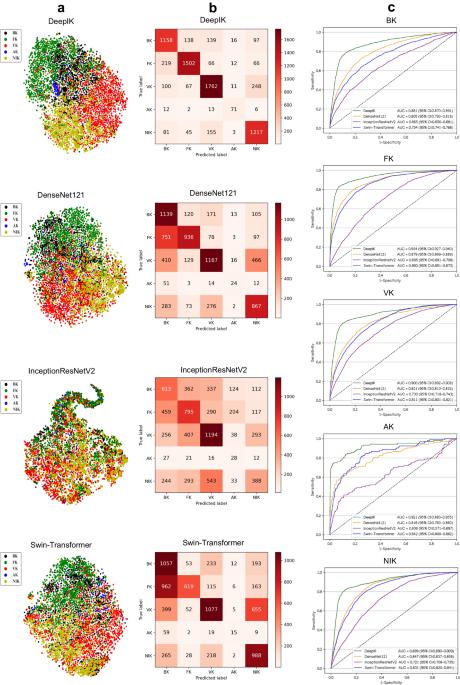Deep learning for multi-type infectious keratitis diagnosis: A nationwide, cross-sectional, multicenter study
IF 12.4
1区 医学
Q1 HEALTH CARE SCIENCES & SERVICES
引用次数: 0
Abstract
The main cause of corneal blindness worldwide is keratitis, especially the infectious form caused by bacteria, fungi, viruses, and Acanthamoeba. The key to effective management of infectious keratitis hinges on prompt and precise diagnosis. Nevertheless, the current gold standard, such as cultures of corneal scrapings, remains time-consuming and frequently yields false-negative results. Here, using 23,055 slit-lamp images collected from 12 clinical centers nationwide, this study constructed a clinically feasible deep learning system, DeepIK, that could emulate the diagnostic process of a human expert to identify and differentiate bacterial, fungal, viral, amebic, and noninfectious keratitis. DeepIK exhibited remarkable performance in internal, external, and prospective datasets (all areas under the receiver operating characteristic curves > 0.96) and outperformed three other state-of-the-art algorithms (DenseNet121, InceptionResNetV2, and Swin-Transformer). Our study indicates that DeepIK possesses the capability to assist ophthalmologists in accurately and swiftly identifying various infectious keratitis types from slit-lamp images, thereby facilitating timely and targeted treatment.


用于多类型感染性角膜炎诊断的深度学习:一项全国性、横断面、多中心研究。
全球角膜失明的主要原因是角膜炎,尤其是由细菌、真菌、病毒和棘阿米巴引起的感染性角膜炎。有效治疗感染性角膜炎的关键在于及时准确的诊断。然而,目前的金标准(如角膜刮片培养)仍然耗时,而且经常出现假阴性结果。本研究利用从全国 12 个临床中心收集的 23,055 张裂隙灯图像,构建了临床上可行的深度学习系统 DeepIK,该系统可模拟人类专家的诊断过程,识别和区分细菌性、真菌性、病毒性、阿米巴性和非感染性角膜炎。DeepIK 在内部、外部和前瞻性数据集上都表现出了卓越的性能(所有接收器操作特征曲线下的面积都大于 0.96),并且优于其他三种最先进的算法(DenseNet121、InceptionResNetV2 和 Swin-Transformer)。我们的研究表明,DeepIK 有能力帮助眼科医生从裂隙灯图像中准确、快速地识别各种感染性角膜炎类型,从而促进及时、有针对性的治疗。
本文章由计算机程序翻译,如有差异,请以英文原文为准。
求助全文
约1分钟内获得全文
求助全文
来源期刊

NPJ Digital Medicine
Multiple-
CiteScore
25.10
自引率
3.30%
发文量
170
审稿时长
15 weeks
期刊介绍:
npj Digital Medicine is an online open-access journal that focuses on publishing peer-reviewed research in the field of digital medicine. The journal covers various aspects of digital medicine, including the application and implementation of digital and mobile technologies in clinical settings, virtual healthcare, and the use of artificial intelligence and informatics.
The primary goal of the journal is to support innovation and the advancement of healthcare through the integration of new digital and mobile technologies. When determining if a manuscript is suitable for publication, the journal considers four important criteria: novelty, clinical relevance, scientific rigor, and digital innovation.
文献相关原料
| 公司名称 | 产品信息 | 采购帮参考价格 |
|---|
 求助内容:
求助内容: 应助结果提醒方式:
应助结果提醒方式:


